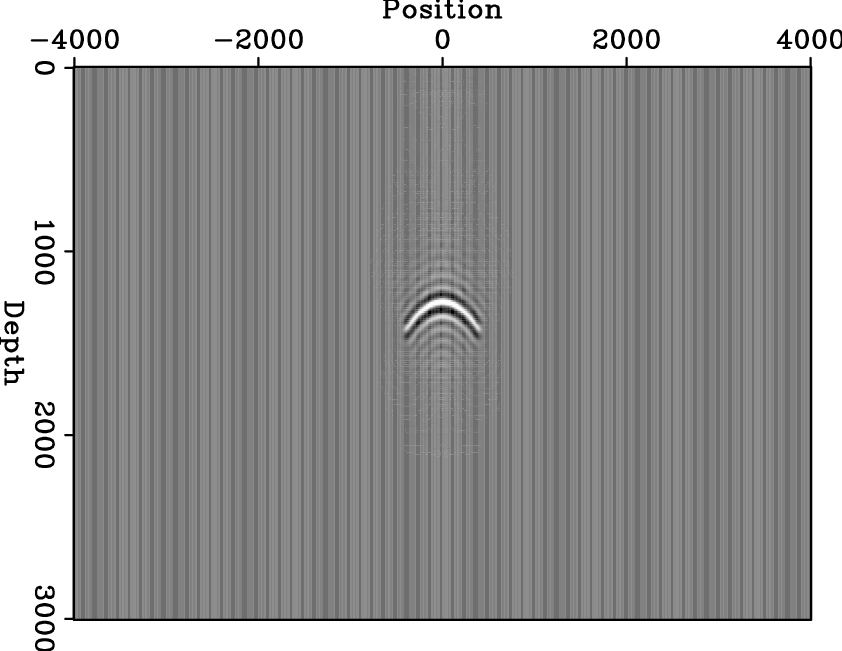|
|
|
|
Velocity model evaluation through Born modeling and migration: a feasibility study |
| (1) |
 are the arbitrarily defined locations where the wavefield will be recorded;
are the arbitrarily defined locations where the wavefield will be recorded;
| (2) |


|
|---|
|
pt-0,pt-n0
Figure 1. Recorded source wavefields that have been reverse-propagated to zero-time; the result in (a) does not include information from the nonzero subsurface offsets of the initial image, while (b) does include this information. Both the initial migration and the modeling used a velocity model that was 15% too slow. |
|
|
|
|
|
|
Velocity model evaluation through Born modeling and migration: a feasibility study |